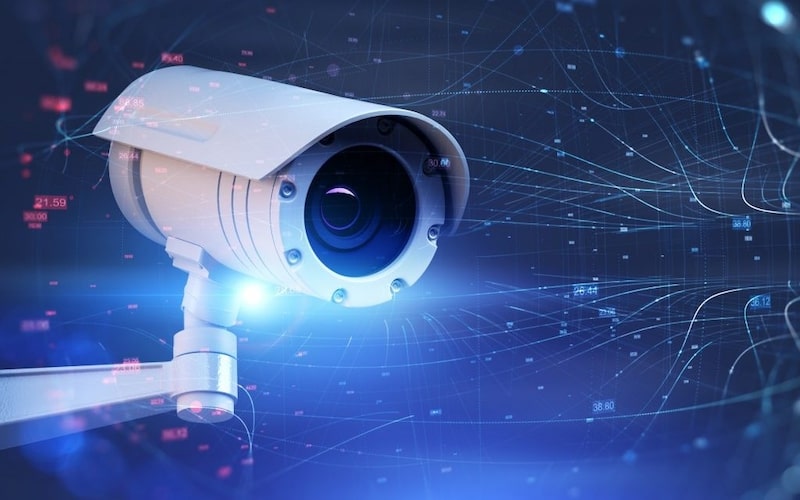
In the realm of security and operational efficiency, the advent of real-time video monitoring system has become a pivotal force driving transformative change. Unlike traditional surveillance systems, which rely on recorded footage, real-time video surveillance leverages advanced technologies such as video content analytics (VCA) and artificial intelligence (AI) to automatically analyze and detect events in real-time.
Real-Time Video Monitoring System
Traditional video monitoring system relies on recorded footage, making it challenging for operators to monitor every camera continuously. Real-time video surveillance, however, leverages video content analytics and AI to automatically analyze and detect objects or events based on predefined algorithms. This proactive approach enables the identification of suspicious activities as they occur, providing a more immediate response to potential threats.
5G and Real-Time Video Monitoring
The advent of 5G technology revolutionizes real-time video monitoring system by significantly reducing latency and improving connectivity. With latency dropping from 50-100 milliseconds in 4G to 1-4 milliseconds in 5G, the responsiveness of cameras is vastly improved. Additionally, 5G supports higher-quality video (4K and 8K), facilitating smoother and more detailed live footage. The increased capacity of 5G ensures uninterrupted connectivity, making it ideal for scenarios with multiple users and devices.
AI-Powered Real-Time Monitoring
AI-backed video monitoring system, driven by Deep Neural Networks, has enhanced the capabilities of real-time monitoring. These systems utilize machine learning algorithms to identify specific objects and patterns within video frames. The deployment of AI enables the automation of analysis, transforming raw video data into intelligent insights without human intervention. This technology significantly improves situational awareness, providing actionable information through real-time alerts.
Benefits of Real-Time Video Monitoring Systems
- High-Level Protection
- Real-time streaming helps detect and prevent incidents, such as loitering or the presence of suspicious objects.
- Advanced video analytics, based on neural networks, ensures high detection accuracy and reliability.
- Predictive Maintenance:
- Combined with AI and IoT systems, video monitoring anticipates and addresses potential issues before they occur.
- Rapid search capabilities trigger real-time alerts, enabling timely responses to security threats.
- Sales and Marketing Capabilities:
- Retail businesses benefit from insights such as heat mapping data, customer behavior analysis, and occupancy patterns.
- Enhanced customer experiences contribute to improved marketing strategies and increased return on investment.
Real-Time Video Monitoring Use Cases
Smart Cities
In the realm of smart cities, the integration of real-time video monitoring system is proving to be a transformative force. By continually surveilling road networks, the system can rapidly identify accidents and promptly alert emergency services. This proactive approach not only aids in minimizing response times but also significantly contributes to overall urban safety. Furthermore, the utilization of Internet of Things (IoT) technology in parking management ensures an efficient allocation of parking spaces, effectively reducing traffic congestion and enhancing the overall flow of urban mobility.
Smart Farming
Smart farming has embraced real-time video analytics to revolutionize agricultural practices. The immediate detection and correction of equipment malfunctions are facilitated through constant monitoring, preventing potential disruptions in farming operations. Additionally, the integration of wireless technologies and video analytics optimizes various agricultural processes, ranging from irrigation to crop monitoring. This technological synergy fosters a data-driven approach, ultimately leading to improved yields and resource utilization in the agricultural sector.
Smart Retail
The retail landscape is undergoing a paradigm shift with the infusion of AI and video analytics into real-time video monitoring system. This integration goes beyond mere surveillance, offering profound insights into customer preferences and behavior. Retailers can harness actionable data on customer characteristics such as age and gender, enabling them to tailor marketing strategies for a more personalized customer experience. The result is not only maximized sales but also an elevated level of customer satisfaction.
Conclusion
The evolution of real-time video monitoring system represents a groundbreaking paradigm shift in enhancing both security and operational efficiency. Departing from the limitations of traditional surveillance methods, the integration of advanced technologies such as video content analytics, artificial intelligence, and the revolutionary capabilities of 5G has empowered these systems with unprecedented capabilities.
From high-level protection through real-time streaming to predictive maintenance and enriched sales and marketing insights, the benefits of real-time video surveillance are diverse and impactful. As industries, including smart cities, farming, and retail, continue to embrace these transformative technologies, the collaborative efforts of companies specializing in tailored software solutions, play a crucial role in ensuring seamless integration and optimization. In this era of rapid technological advancement, the real-time video monitoring system stands as a cornerstone for proactive decision-making, safeguarding against threats, and driving sustained success across diverse sectors.
